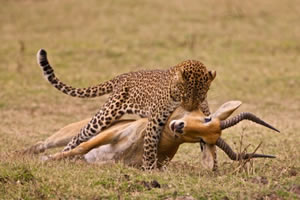


As you can see, there does appear to be cycling over time in both hare and lynx number, but it's not as clean as in the simple mathematical models. ABSTRACT: The predator-prey relationships between the California scorpionfish. While this is an indirect measure of predation, the assumption is that there is a direct relationship between the number of pelts collected and the numer of hare and lynx in the wild. The associations that exist between different organisms in the ecosystem. One of the classic studies of predator-prey interactions is the 90-year data set of snowshoe hare and lynx pelts purchased by the Hudson's Bay Company of Canada. Predator-Prey relationship is a very fundamental aspect of every ecosystem. Part 3: Exploitation and population cycles Watch these short video lectures for a very nice overview of predator-prey interactions. What causes prey number to cycle in the absence of predators? Generally the answer is that without predators to suppress their number, prey outstrip available food resources, nesting sites, or some other limited resource and thus begin to suppress their further growth through competition. You can see a graphic example of this in Figure 24.4.

Often this means killing the prey and eating all or most of the prey organism. We find that in both general and mosquito-specific models, competing species or predators can facilitate drive-based suppression, albeit at the cost of an increased rate of drive loss outcomes. Predation is a community relationship in which organisms in one species, called the predator, consume tissues of organisms in another species, called the prey. You can use this interactive quiz about predator-prey relationships when you are covering food chains and feeding relationships in your Year 4 science. Another option is to increase the number of participants. If the prey cannot be caught easily, make the circle smaller. Select predators and prey that have a natural relationship, such a fish/minnow, wolf/deer or owl/mouse. Interestingly though, there are situations where predators are absent, such as on islands or in other isolated areas where they either never became introduced or where they have died out, and yet prey continue to oscillate in number. Here, we extend our continuous space framework to include two competing species or predatorprey pairs. The predator is blind-folded and the prey should make a sound every five seconds or wear bells. As long as predator and prey numbers don't drop to zero, this cycle can repeat indefinitely. This can lead to cyclical patterns of predator and prey abundance, where prey increase in number and then, with abundant food, predator number increases until the predators begin to suppress prey numbers and then decrease as well. What may require a bit more reflection is that prey, in turn, affect the number of predators because, when prey become scarce, predators may die of starvation or fail to reproduce. It should come as no surprise that predators influence the numbers of their prey.


 0 kommentar(er)
0 kommentar(er)
